Catholic Customs
 |
 |
 |
 |
 |
 |
 |
Martinstag Celebration in Germany
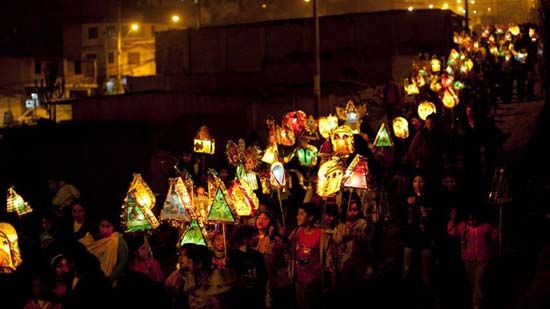
A procession with lighted paper lanterns that ends with a bonfire and play
In medieval times, the peasants would look forward to this celebration that marked the closing of their work in the fields and the beginning of the more quiet winter. This feast day was also cherished then because it acted as a kind of small carnival season before the fasting of Advent, which began after St. Martin’s Feast and lasted till Christmas.
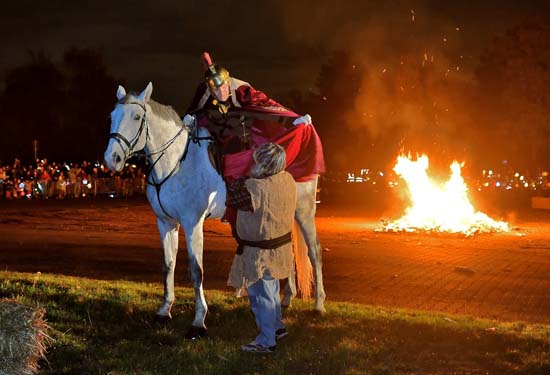
The Roman soldier Martin gives half his cloak to a beggar
Most Catholics know the story of St. Martin, the converted Roman soldier who saw a shivering beggar on a cold day. Without hesitation, he cut his cloak in half and gave one part to the poor man. That night he had a dream where Christ appeared to him wearing the half-cloak. Pointing to Martin, he said: “Here is Martin, the Roman soldier who is now baptized. He has clothed me.”
Shortly after, Martin left the Roman army to serve Christ as a monk. His fame of holiness and goodness to the poor spread, and when the bishopric of Tours became vacant, the people demanded that Martin become their Bishop.
The story goes that, in order to escape this honor, Martin left his house at night and hid himself in a goose pen. When they learned of Martin’s escape, the people went searching for Martin with lanterns in their hands.
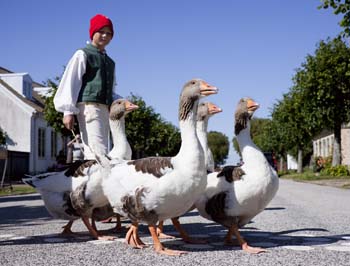
A boy in traditional garb drives the St Martin's Day geese
This is why the Germans eat a roast goose at the table and parade through the streets with lanterns and song on St. Martin’s feast day.
The Martinszug (St. Martin's Parade) begins on November 10, the eve of the feast. All the people, adults and children, gather in the streets with their homemade lanterns. They process through the streets with lanterns in hands singing traditional St. Martin Songs. As they pass the houses on the street, the generous masters and mistresses offer the singers sweets such as apples, nuts, candies and the traditional Weckmännchen (sweet buns shaped like a man with a pipe).
The parade ends in the village square where a large bonfire blazes in honor of St. Martin. After all of the people have gathered in the square, a man appears riding on a horse dressed in the splendid costume of a Roman soldier.
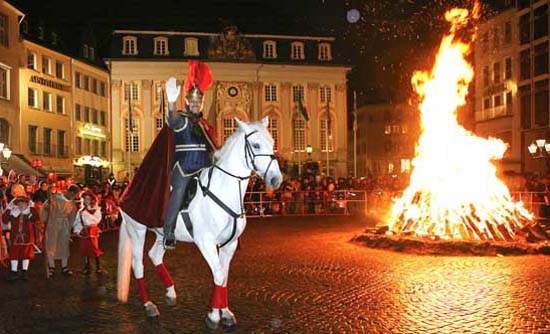
The procession ends in the village square where a great bonfire blazes
Suddenly the mounted St. Martin approaches the beggar and cuts off a portion of his splendid cloak and hands it to the beggar. After this theatrical display honoring the generous and noble spirit of St. Martin, the people return to their homes to celebrate with a grand feast, at the center of which is that goose who gave away St. Martin’s hiding place.
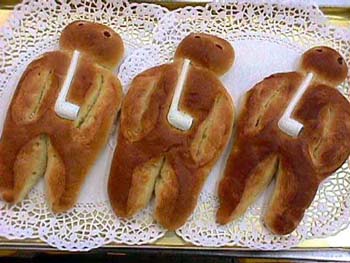
The traditional Weckmännchen served on St. Martin's Day, with the centerpiece goose
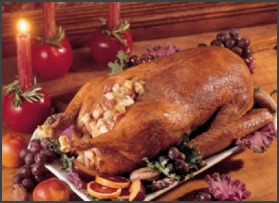
These lovely traditions ought to inspire families to celebrate the feasts of the Saints with more festivity and charm. Customs like these become important events for the whole community that lift everyone’s minds and hearts to the supernatural world of Angels and Saints.
Let me suggest a few ways to incorporate these traditions into your family:
- Every member of the family can participate in preparing for the feast by making paper lanterns (tutorials here and here) and learning the St. Martins Day songs (here, here and here). The lanterns should be as beautiful as possible so that they give honor to St. Martin. The father and mother can explain these customs and relate the legends of St. Martin as preparations are made for the feast.
- When the evening of November 11 approaches, the father can assemble the family and prepare to lead the procession. The procession should be made with solemnity and seriousness so that the children understand that honoring the saints is not simply a childish thing to do. Either the father or the oldest son can dress as St. Martin donning a Roman helmet and cloak. One of the younger boys can dress as the beggar.
With the father in the lead, the family should process around the house or the neighborhood singing the songs and holding the lanterns. It is ideal if a group of families can join together for the “festival,” coming together at the procession's end before an outdoor bonfire or indoor fireplace, where the scene with St. Martin and the beggar are acted out.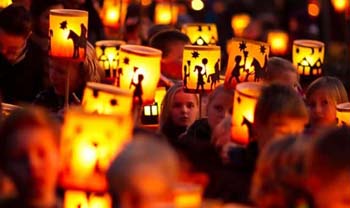
St Martin's Day lanterns
- After this procession and play comes the lovely meal with a roast duck, goose or chicken at its center and the Weckmännchen (find a recipe here).
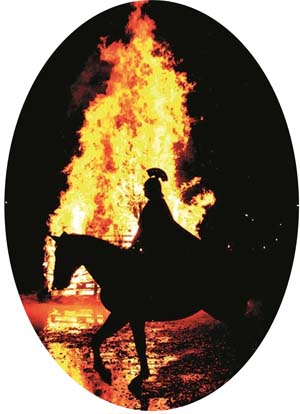

Posted November 11, 2019
______________________
______________________








